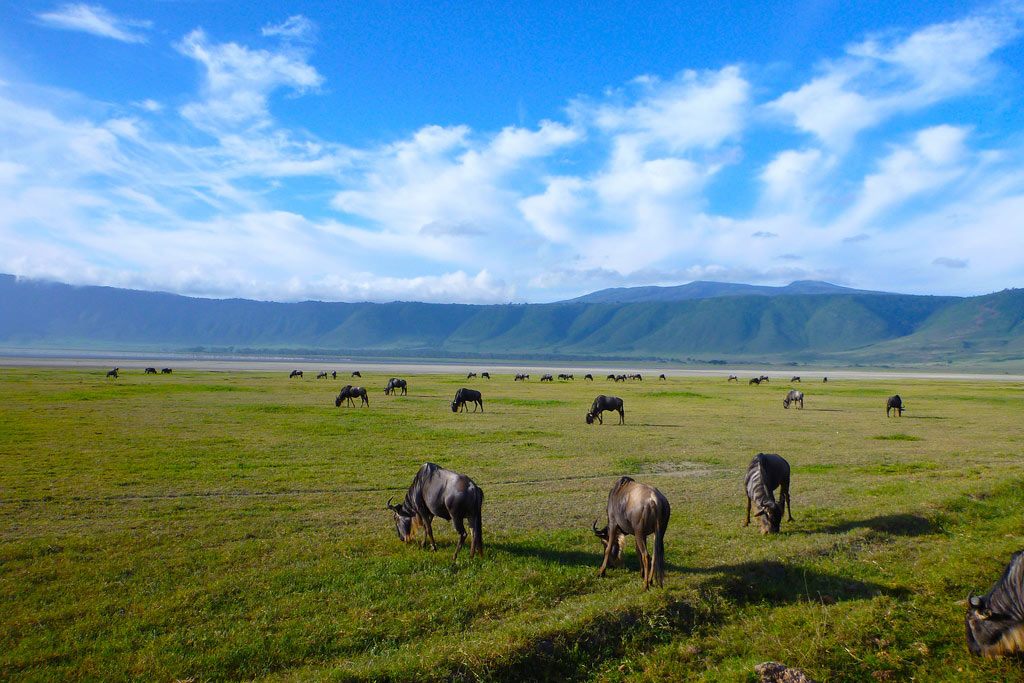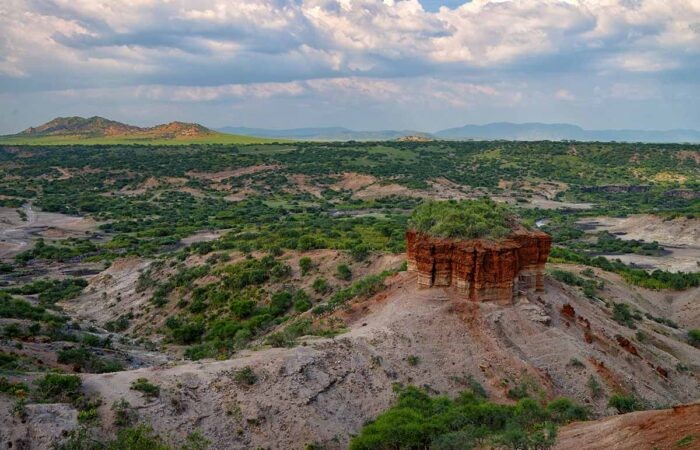Ngorongoro Conservation Area
Overview
Ngorongoro Conservation Area is renowned for its exceptional beauty and unique features along with its perfection in rare wild species. Spend your vacation on 12miles wide and 2,000 feet deep escarpment. Three million years ago there existed a massive supervolcano mountain that stood higher and mightier than its neighbor Mt.Kilimanjaro. Its glory all around fell when it erupted with a blast so ferocious that it caved in on itself, an implosion creating a caldera spanning a hundred square miles. It is12miles wide and 2,000 feet deep. But its glory returned after a few decades. Over the course of a few years this geologic divot filled with life as it caught pockets of freshwater, developed lush vegetation and got arrival from the wild species.

Description
Is a protected area and a World Heritage Site located 180 km (110 mi) west of Arusha in the Crater Highlands area of Tanzania. The area is named after Ngorongoro Crater, a large volcanic caldera within the area. The conservation area is administered by the Ngorongoro Conservation Area Authority, an arm of the Tanzanian government, and its boundaries follow the boundary of the Ngorongoro Division of the Arusha Region.
The 2009 Ngorongoro Wildlife Conservation Act placed new restrictions on human settlement and subsistence farming in the Crater, displacing Maasai pastoralists, most of whom had been relocated to Ngorongoro from their ancestral lands to the north when the British colonial government established Serengeti National Park in 1959.
The main feature of the Ngorongoro Conservation Authority is the Ngorongoro Crater, the world’s largest inactive, intact and unfilled volcanic caldera. The crater, which formed when a large volcano exploded and collapsed on itself two to three million years ago, is 610 meters (2,000 feet) deep and its floor covers 260 square kilometers (100 square miles). Estimates of the height of the original volcano range from 4,500 to 5,800 meters (14,800 to 19,000 feet) high. The crater floor is 1,800 meters (5,900 feet) above sea level. The crater was voted by Seven Natural Wonders as one of the Seven Natural Wonders of Africa in Arusha, Tanzania in February 2013. The Ngorongoro volcano was active from about 2.45 to 2 million years ago.
Oldupai or Olduvai Gorge
The Ngorongoro Conservation Area also protects Olduvai or Olduvai Gorges, situated in the plains area. It is considered to be the seat of humanity after the discovery of the earliest known specimens of the human genus, Homo habilis as well as early Hominidae, such as Paranthropus boisei.
The Olduvai Gorge is a steep-sided ravine in the Great Rift Valley, which stretches along with eastern Africa. Olduvai is in the eastern Serengeti Plains in northern Tanzania and is about 50 kilometers (31 mi) long. It lies in the rain shadow of the Ngorongoro highlands and is the driest part of the region. The gorge is named after ‘Oldupai’, the Maasai word for the wild sisal plant, Sansevieria Ehrenberg.
It is one of the most important prehistoric sites in the world and research there has been instrumental in furthering understanding of early human evolution. Excavation work there was pioneered by Mary and Louis Leakey in the 1950s and is continued today by their family. Some believe that millions of years ago, the site was that of a large lake, the shores of which were covered with successive deposits of volcanic ash. Around 500,000 years ago seismic activity diverted a nearby stream which began to cut down into the sediments, revealing seven main layers in the walls of the gorge.

Wildlife
Approximately 25,000 large animals, mostly ungulates, live in the crater. Large mammals in the crater include the black rhinoceros (Diceros bicornis Michaeli), the local population of which declined from about 108 in 1964-66 to between 11-14 in 1995, the African buffalo or Cape buffalo (Syncerus caffer), and the hippopotamus (Hippopotamus amphibius). There also are many other ungulates: the blue wildebeest (Connochaetes taurinus) (7,000 estimated in 1994), Grant’s zebra (Equus quagga boehmi) (4,000), the common eland (Taurotragus oryx), and Grant’s (Nanger granti) and Thomson’s gazelles (Eudorcas thomsonii) (3,000). Waterbucks (Kobus ellipsiprymnus) occur mainly near Lerai Forest.

Let’s start planning now your next African Adventure!

